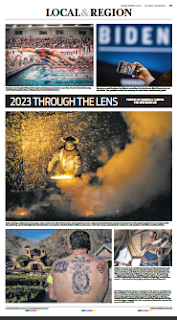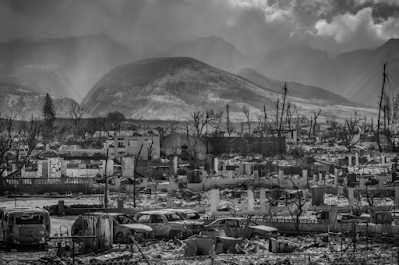Via VOA
December 20, 2023
WASHINGTON — At least a dozen journalists faced arrest or charges related to their newsgathering across the U.S. in 2023, with most working for local media outlets.
The incidents and their impact on the ability of journalists to cover the news are detailed in
a report released Wednesday by the U.S. Press Freedom Tracker.
Based in New York, the Tracker has documented what it sees as press freedom violations inside the U.S. since 2017.
According to the Tracker, many of the cases this year involved attempts to prevent journalists from engaging in regular reporting practices — from asking questions to investigating public officials. It cited around 30 cases of journalists or media outlets being summoned and asked to identify a source or hand over reporting materials.
“What was interesting this year was an apparent criminalization of general newsgathering,” said Stephanie Sugars, the report’s author.
The number of cases of journalists arrested is lower than previous years, when the Tracker documented dozens of cases as media covered unrest and large-scale protests. Still, the findings are a concern, the nonpartisan group said.
In one case from October, police arrested a small-town Alabama newspaper publisher and a reporter for publishing an article that authorities said contained confidential grand jury evidence.
While leaking information may be illegal, it is not a crime for news outlets to publish that information, so long as the reporters are not involved in illegally obtaining the materials, press experts say.
In another case, a reporter at an Illinois newspaper was cited for asking city officials too many questions about flooding in October.
“That is normal newsgathering,” Sugars told VOA from New York.
In the Illinois case, the charges were dropped.
In a separate incident in Ohio, NewsNation correspondent Evan Lambert was ordered to stop a live broadcast while Governor Mike DeWine was giving a press briefing in February. Officers then forced Lambert to the ground and arrested him.
The governor expressed concern and said he was not aware of the incident at the time it occurred.
Lambert filed a lawsuit in November over the incident.
Meanwhile, an Arizona judge in April granted a restraining order against a local reporter after the journalist looked into a state senator’s residency claims. Another judge later rejected the restraining order. And in July, two California reporters were accused by a local police union of stalking for trying to contact a police officer at her home.
“Attempts to criminalize routine journalistic activities, such as contacting public officials or the subjects of stories, send a chill through the heart of newsgathering,” Sugars wrote in the report.
It’s unclear whether police and officials in these incidents were unaware of what constitutes normal newsgathering or whether they just didn’t care, Sugars said.
But, she added, that distinction also misses the point.
“Whether they know that it is general, basic newsgathering or not is less important than the fact that they just don’t like it and are using the tools at their disposal to retaliate,” Sugars said.
Another factor that links many of the cases in the Press Freedom Tracker’s report is that most incidents took place at the local level, affecting smaller or regional publications.
That’s likely a byproduct of the decline of local news coverage, according to Sugars.
The U.S. has lost more than one fourth of its newspapers since 2005 and is set to lose one third of all its roughly 6,000 remaining print newspapers — mostly weeklies — by 2025, according to a report by Northwestern University’s Local News Initiative.
“That lack of constant scrutiny has created an atmosphere where local officials feel like they are no longer responsible for answering questions,” Sugars said.
First Amendment experts say such violations make it harder for journalists to do their jobs.
“If you’ve got these instances of law enforcement overreach, again, it impairs the press’s watchdog role," said Gabe Rottman of the Reporters Committee for Freedom of the Press, or RCFP.
Rottman, who is director of the RCFP’s Technology and Press Freedom Project, said that it is important for government officials to understand the role journalists play in their community.
Fewer journalists were arrested or charged in the United States in 2023 than in the past few years, the Tracker report found.





